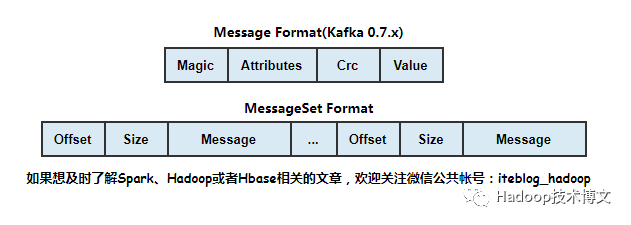MySQL如何建立索引
create table if not exists `article`( id int(10) unsigned not null primary key auto_increment, author_id int(10) unsigned not null, category_id int(10) unsigned not null, views int(10) unsigned not null, comments int(10) unsigned not null, title varbinary(255) not null, content text not null );insert into article(author_id,category_id,views,comments,title,content) values (1,1,1,1,'1','1'), (2,2,2,2,'2','2'), (1,1,3,3,'3','3'), (1,1,1,2,'4','4');mysql> select * from article;+----+-----------+-------------+-------+----------+-------+---------+| id | author_id | category_id | views | comments | title | content |+----+-----------+-------------+-------+----------+-------+---------+| 1 | 1 | 1 | 1 | 1 | 1 | 1 || 2 | 2 | 2 | 2 | 2 | 2 | 2 || 3 | 1 | 1 | 3 | 3 | 3 | 3 || 4 | 1 | 1 | 1 | 2 | 4 | 4 |+----+-----------+-------------+-------+----------+-------+---------+
查询category_id为1且comments大于1的情况下,views最多的article_id
explain select id,author_id from article where category_id=1 and comments>1 order by views desc limit ;

结论:type是all,即最坏的情况,extra里边还出现了using filesort,也是最坏的情况,优化是必须的。
查看索引
show index from article;
发现只有一个主键索引
下面开始优化
针对category_id,comment,views建立一个复合索引
alter table article add index idx_article_ccv(category_id,comments,views);或者create index idx_article_ccv on article(category_id,comments,views);drop index idx_article_ccv on article;


type的值变成range了,通过key看到用了索引。但还是有using filesort。
type变成了range,这是可以接受的,但是extra里使用using filesort仍是无法接受的。
但是我们已经建立的索引,为啥没用呢?
这是因为按照BTree索引的工作原理,先排序category_id,如果遇到相同的category_id则再排序comments,如果遇到相同的comments则再排序views。当comments字段在联合索引里处于中间位置时,因comments>1条件是一个范围值(所谓range),MySQL无法利用索引再对后面的views部分进行检索,即range类型查询字段后面的索引无效。
因为这里comments的条件为>1会让索引失效。那我可不可以绕过comments建立索引,而建立category_id和views的索引呢。
这里我先把comments>1改成=1
explain select id,author_id from article where category_id=1 and comments=1 order by views desc limit 1;

改完之后发现没有using filesort了,但是不符合需求了。这里注意,以后工作的时候可以和产品经理商量看需求可不可以这样弄,性能会更好。
当前这个索引解决了全表扫描的问题,但还有using filesort的问题,我需要更改索引。
我删除之前的索引,然后创建category_id和views的索引,之后再执行SQL语句
drop index idx_article_ccv on article;create index idx_article_ccv on article(category_id,views);show index from article;explain select id,author_id from article where category_id=1 and comments>1 order by views desc limit 1;

结论:可以看到type变为了ref,extra中的using filesort也消失了,结果非常理想。
两表
create table if not exists class( id int(10) unsigned not null auto_increment, card int(10) unsigned not null, primary key(id) );create table if not exists book( bookid int(10) unsigned not null auto_increment, card int(10) unsigned not null, primary key(bookid) );insert into class(card) values(floor(1+(rand()*20)));insert into class(card) values(floor(1+(rand()*20)));insert into class(card) values(floor(1+(rand()*20)));insert into class(card) values(floor(1+(rand()*20)));insert into class(card) values(floor(1+(rand()*20)));insert into class(card) values(floor(1+(rand()*20)));insert into class(card) values(floor(1+(rand()*20)));insert into class(card) values(floor(1+(rand()*20)));insert into class(card) values(floor(1+(rand()*20)));insert into class(card) values(floor(1+(rand()*20)));insert into class(card) values(floor(1+(rand()*20)));insert into class(card) values(floor(1+(rand()*20)));insert into class(card) values(floor(1+(rand()*20)));insert into class(card) values(floor(1+(rand()*20)));insert into class(card) values(floor(1+(rand()*20)));insert into class(card) values(floor(1+(rand()*20)));insert into class(card) values(floor(1+(rand()*20)));insert into class(card) values(floor(1+(rand()*20)));insert into class(card) values(floor(1+(rand()*20)));insert into class(card) values(floor(1+(rand()*20)));insert into book(card) values(floor(1+(rand()*20)));insert into book(card) values(floor(1+(rand()*20)));insert into book(card) values(floor(1+(rand()*20)));insert into book(card) values(floor(1+(rand()*20)));insert into book(card) values(floor(1+(rand()*20)));insert into book(card) values(floor(1+(rand()*20)));insert into book(card) values(floor(1+(rand()*20)));insert into book(card) values(floor(1+(rand()*20)));insert into book(card) values(floor(1+(rand()*20)));insert into book(card) values(floor(1+(rand()*20)));insert into book(card) values(floor(1+(rand()*20)));insert into book(card) values(floor(1+(rand()*20)));insert into book(card) values(floor(1+(rand()*20)));insert into book(card) values(floor(1+(rand()*20)));insert into book(card) values(floor(1+(rand()*20)));insert into book(card) values(floor(1+(rand()*20)));insert into book(card) values(floor(1+(rand()*20)));insert into book(card) values(floor(1+(rand()*20)));insert into book(card) values(floor(1+(rand()*20)));insert into book(card) values(floor(1+(rand()*20)));
下面开始explain分析
explain SELECT * from class LEFT JOIN book on class.card=book.card;

结论type有all
我索引应该建立到左表还是右表呢,不知道,那怎么办?都试一遍呗
先在book表上添加索引,这里book表是右表,左连接加在右表上
alter table book add index Y(card);

之后我把这个索引删除掉
drop index Y on book;
之后加在card表上
alter table class add index Y(card);

这次把索引加到左表上,但效果没有加在右表上好。
结论:左连接的时候左边全有,加索引加到右表上。这是由左连接特性决定的。left join条件用于确定如何从右表搜索行,左边一定都有,所以右边是我们的关键点,一定需要建立索引
DBA建立索引的时候是为全局考虑的,不可能因为个人而更改索引。
但我们可以自己更换一下表的位置啊,以前在左边的表放到右边。
右连接的话,右边一定都有,所以左边是我们的关键点,一定需要建立索引。
三表
create table if not exists phone( phoneid int(10) unsigned not null auto_increment, card int(10) unsigned not null, primary key(phoneid) );insert into phone(card) values(floor(1+(rand()*20)));insert into phone(card) values(floor(1+(rand()*20)));insert into phone(card) values(floor(1+(rand()*20)));insert into phone(card) values(floor(1+(rand()*20)));insert into phone(card) values(floor(1+(rand()*20)));insert into phone(card) values(floor(1+(rand()*20)));insert into phone(card) values(floor(1+(rand()*20)));insert into phone(card) values(floor(1+(rand()*20)));insert into phone(card) values(floor(1+(rand()*20)));insert into phone(card) values(floor(1+(rand()*20)));insert into phone(card) values(floor(1+(rand()*20)));insert into phone(card) values(floor(1+(rand()*20)));insert into phone(card) values(floor(1+(rand()*20)));insert into phone(card) values(floor(1+(rand()*20)));insert into phone(card) values(floor(1+(rand()*20)));insert into phone(card) values(floor(1+(rand()*20)));insert into phone(card) values(floor(1+(rand()*20)));insert into phone(card) values(floor(1+(rand()*20)));insert into phone(card) values(floor(1+(rand()*20)));insert into phone(card) values(floor(1+(rand()*20)));
把之前建立的索引都删除掉,现在看class,book,phone这三张表。
EXPLAIN SELECT * FROM class LEFT JOIN book ON class.card = book.card LEFT JOIN phone ON book.card = phone.card;

之后我在book和phone上建立索引
alter table book add index Y(card);alter table phone add index z(card);

尽可能减少Join语句中的NestedLoop(嵌套循环)的循环总次数;“永远用小结果集驱动大的结果集”
书的数目肯定比书的类别要多,所以SQL语句要这样写
SELECT * from class LEFT JOIN book on class.card=book.card;
如果用左连接的话,把类别表放到左边,因为类别少,左连接的左表肯定会全扫描,把数据少的放到左边。永远是小结果集驱动大的结果集
优先优化NestedLoop的内层循环。
保证Join语句被驱动表上Join条件字段已经被索引
当无法保证被驱动表Join条件字段被索引且内存资源充足的前提下,不要太吝啬JoinBuffer的设置。



































还没有评论,来说两句吧...